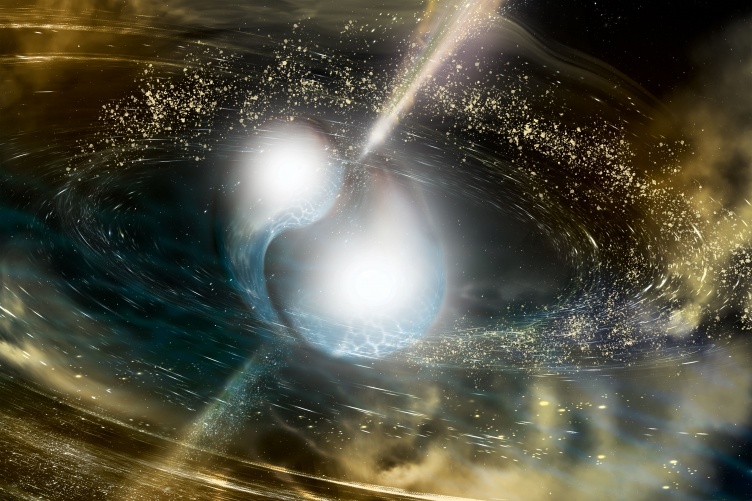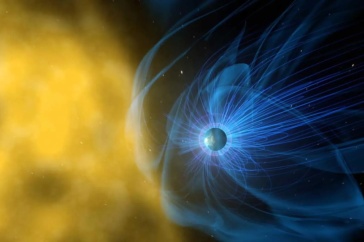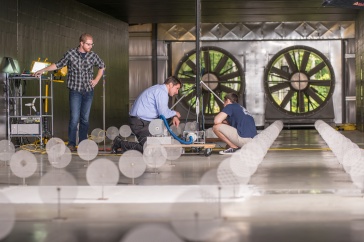
Artist's impression of a neutron-star merger (Courtesy: NASA)
Research published in part by UNH’s Francois Foucart, associate professor of physics, shed more light on where heavy elements such as gold, platinum and silver found on Earth may have originated from.
According to the research, published in the Astronomy Journal Letters, mergers or “collisions” between neutron stars have most likely produced more heavy metals than mergers between black holes and neutron stars. The research was the first of its kind and findings could also help scientists determine the rate at which heavy metals are produced across the universe.
“As often for theoretical astrophysics, this study is helping us understand the universe; in this case the origin of metals like gold and platinum, and the laws of nuclear physics,” says Foucart, who built the models to determine the amount of heavy metals produced by each merger event.
Neutron stars, which are very compact objects approximately 10 miles wide, contain more mass than the sun and are connected to important unknowns in nuclear physics. The merger of two neutron stars results in a large amount of neutron-rich matter being ejected from the star. The first observed merger was in 2017 and was 100 million light years away.
The latest research aimed to begin exploring which merger event produces more heavy elements in relation to the other. Foucart says the findings showed that even with the small number of merger events observed at the time of the study — two black hole-neutron star mergers and two neutron star-neutron star binaries — that there are inferences that can be made about which of these systems will dominate the production of heavy elements relative to the other.
“This was a bit surprising even to us,” says Foucart. “We had initially thought that there would not be enough information yet to make these inferences, and that we were really only preparing for more detailed studies in the next few years when we might have tens of events of each type.”
Foucart, who previously won a prestigious Department of Energy (DOE) Early CAREER Research Award to study the mergers of neutron stars, also provided expertise on the physics of merger events for the study. The lead author of the study was Hsin-Yu Chen, a postdoc in MIT’s Kavli Institute for Astrophysics and Space Research. The other co-author was Salvatore Vitale, assistant professor of physics at MIT. The collaboration between UNH and MIT was hatched in a discussion at the East Coast Gravity meeting a few years ago and they have been working on projects together since. This research was funded, in part, by NASA, the National Science Foundation, and the LIGO Laboratory.
-
Written By:
Brooks Payette | College of Engineering and Physical Sciences

















































